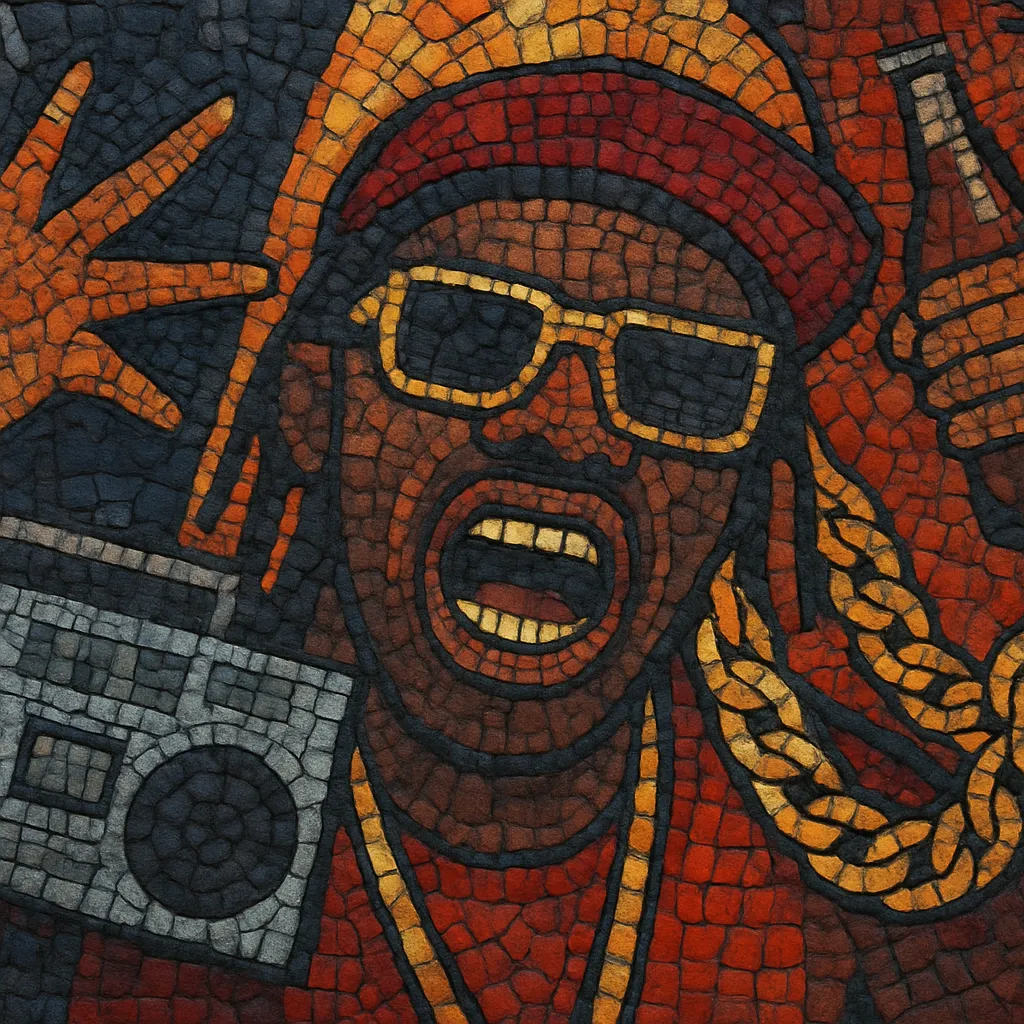Crunk is a high-energy substyle of Southern hip hop built for clubs, arenas, and call-and-response crowd participation. It emphasizes booming 808 kick drums, aggressive snare/clap backbeats, and simple, chant-like hooks delivered by a lead rapper and a hypeman or group vocals.
The production is stark and percussive: sub-bass 808s, handclaps, clattering hi-hats, and brash synth stabs or brass hits carry most of the weight, with very little harmonic movement. Tempos typically sit around 70–80 BPM in half-time (or 140–160 BPM double-time), creating a stomping, anthemic feel.
Lyrically, crunk focuses on amping the crowd—party commands, fight music, and swagger—more than narrative storytelling. The word “crunk,” a Southern slang blend of “crazy” and “drunk,” reflects its rowdy, cathartic intent.
Crunk emerged in the American South in the late 1990s, with roots in Memphis and Atlanta club culture. Early Memphis producers and crews (e.g., Three 6 Mafia) pushed darker, minimal, bass-heavy beats and chant-style hooks, while Atlanta scenes sharpened the style into a clean, arena-ready formula. The slang term “crunk” captured the music’s purpose: getting crowds hyped.
Atlanta became the epicenter as Lil Jon & The East Side Boyz popularized the sound nationally. Hits like “Get Low” (with the Ying Yang Twins), “Salt Shaker,” and club anthems by Trillville, Crime Mob, Bone Crusher, and Lil Scrappy defined the era. Producers leaned into massive 808s, piercing synths/brass, and chant hooks. Crossovers with R&B—often dubbed “crunk&B”—exploded via tracks like Usher’s “Yeah!” and Ciara’s “Goodies,” bringing the crunk rhythm and hype-vocal aesthetic to pop radio.
By the mid-2000s, crunk’s minimal percussion and chant-forward writing helped spawn snap music in Atlanta. Its emphasis on sub-bass impact and crowd-energy songwriting also bled into emerging trap production aesthetics in the South. Outside hip hop, its bombastic, chantable hooks and drum palettes influenced club rap and even rock-rap hybrids (crunkcore).
While its commercial peak faded in the late 2000s, crunk’s DNA—huge 808s, half-time stomp, crowd chants—persists in Southern hip hop, stadium/arena sound design, and festival-oriented trap. The genre remains a reference point for high-intensity party rap and a foundational chapter in the broader Dirty South lineage.


